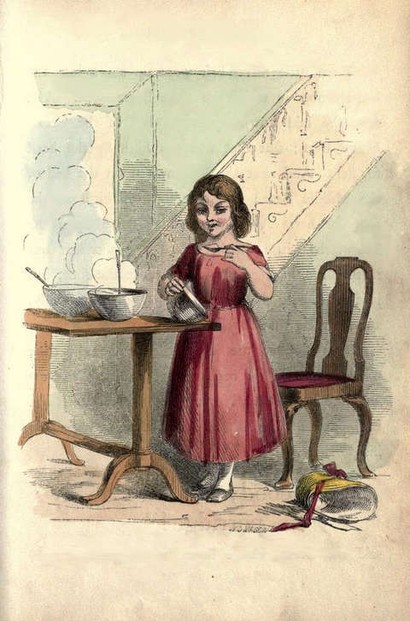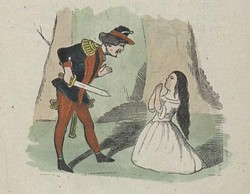Goldilocks and Three Bears is a short story for children with several hundred years of history. It's a bit different from most popular classic fairy tales and I will try to explain why it has so special status.
The structure of the story about the girl who enters the home of the bears is simple and effective with almost hypnotic narration which is not only popular among children but can serve as a great example of quality storytelling for everybody who wants to prepare a written or oral presentation of just about anything.
For better understanding, it's good to know something about the history of Goldilocks, its variations, differences, and similarities with other popular stories for kids - a bit of background, in short. So here are 10 facts about Goldilocks and Three Bears.












 Vintage Postcard Artists with 10 Examples of Easter Cardson 02/21/2025
Vintage Postcard Artists with 10 Examples of Easter Cardson 02/21/2025
 Valentine's Symbolson 01/23/2025
Valentine's Symbolson 01/23/2025
 Thanksgiving Symbolson 11/12/2024
Thanksgiving Symbolson 11/12/2024
 Famous Witches in Literary Historyon 10/06/2024
Famous Witches in Literary Historyon 10/06/2024


What Do You Think about Goldilocks and Three Bears?
It's not clear if the fox preceded the old lady or vice versa. In my opinion fox should be used before, in older versions. In any case the color of her fur is irrelevant but the color of the lady's hair is important and it seem logical that this importance is carried in next variations.
I don't think so - I believe the shift from silver to gold was due the shift from the arrogance of the old lady to the frivolity of a kid.
Talking animals are not part of the magic. Fables are all about talking animals but we all know they are just representations of human characteristics.
Yes.
The 8th subheading, Sleep, considers that testing "beds and sleeping in one of them is a very important part of the Goldilocks' intrusion. While eating others' food and destroying others' property clearly shows her rudeness, the sleeping part shows her more vulnerable part."
It's interesting that Goldilocks so brashly or naively or trustingly moves through the house.
Might it not show her confidence in getting out of tight spots?
Thank for the link under the 7th subheading, Rule of three, to your same-named wizzley, which I consult frequently.
Does it matter how many competitors or opponents a trio has? For example, that rule operates as 3 against 1!
The in-text image between subheadings 7 and 8, Rule of three and Sleep respectively, involves a charming illustration by Rosa C. Pehterick.
Is the implication that the three bears left their house to enjoy a berry -- ;-D -- delicious picnic?!
Thank you for the link, under the seventh subheading, The rule of three, to your wizzley on the 3's rule.
The earliest appearance of Goldilocks and her three bears gets me mulling why 3, why not the 7 and the 12 numbers that manifest themselves in your wizzley?
Is a Christian influence ever manifest in fairy tales?
If so, might one such influence be in the trinity motivating the number 3 -- not meaning papa, mama or baby as God the Father, God the Holy Spirit, God the Son! -- for the bear trio?
Might 3 have been picked to note the bears as nicer -- but naiver for not locking their door -- than Goldilocks?
The in-text image between subheadings 6 and 7, Domestication of the bears and Rule of three respectively, contains a wall sign declaring that "Thyme is money. Save it."
Does the sign really mean the herb or does it really mean time?
Is there something in some versions about thyme or is this artistic interpretation by Leonard Leslie Brooke?
The sixth subheading, Domestication of the Bears, considers that "We have already mentioned the changes in relations between the bears. By becoming a family they were truly humanized. We also learn that they live in a house, eat porridge, and have human furniture in the house."
Might it be considered magical that such a change occurred?
Or might the "clumsiness of the bears who lived in the household which they were not capable of maintaining" preclude magic?